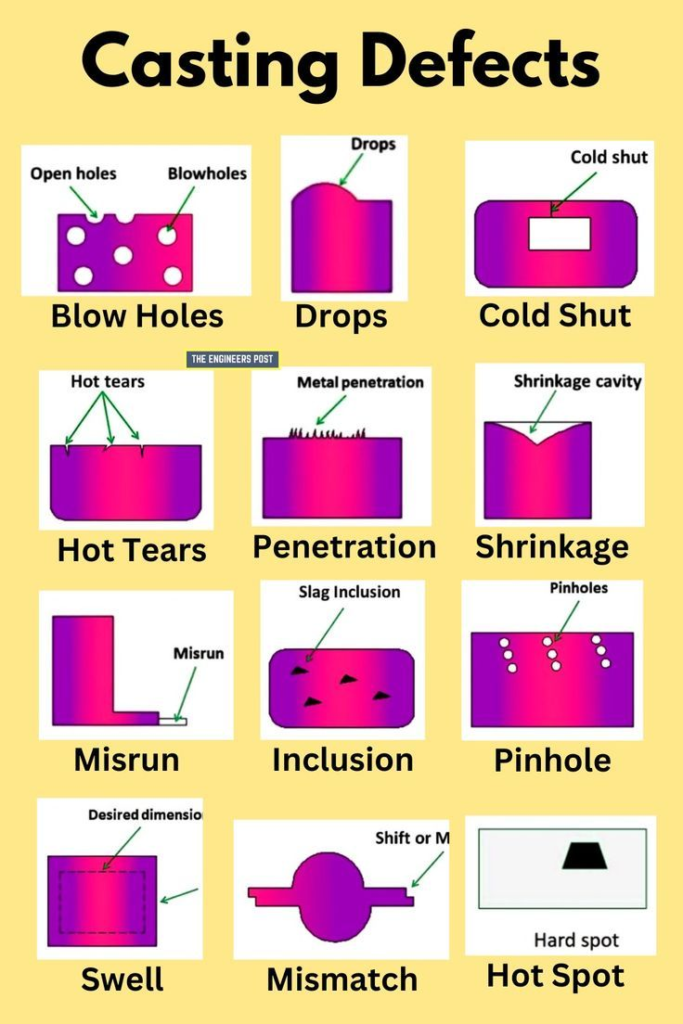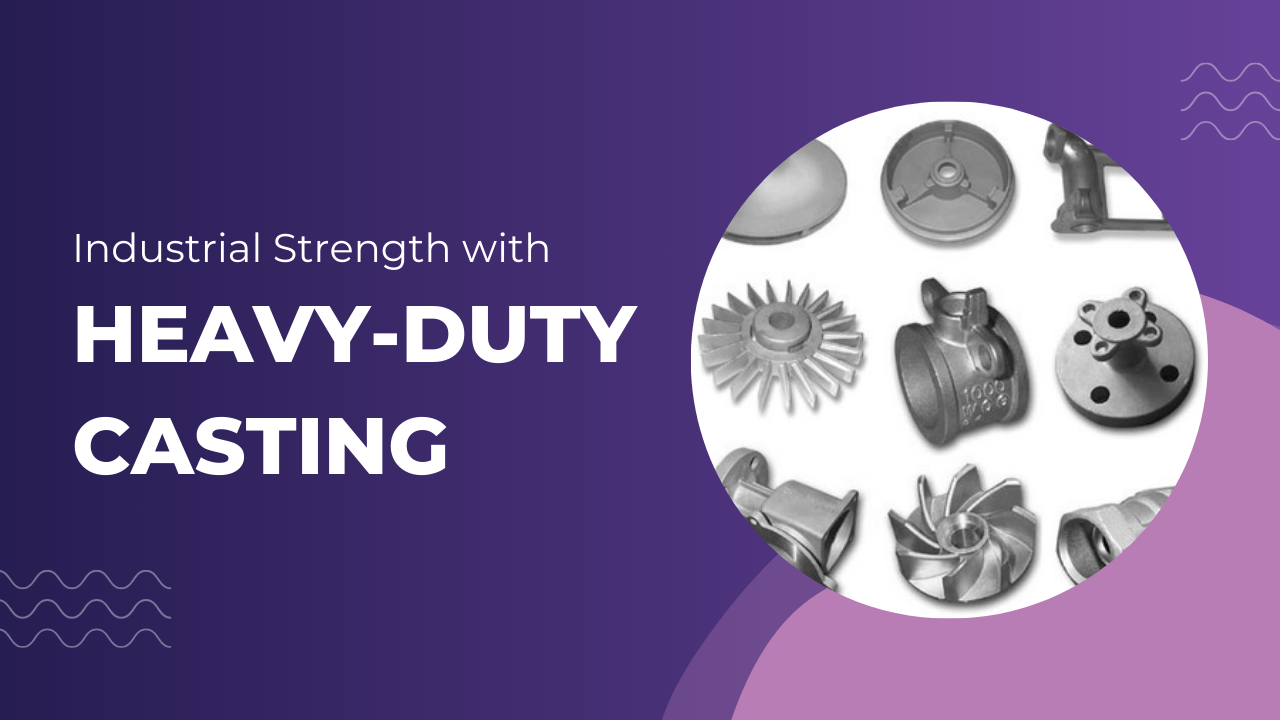Are casting defects like porosity or cracks disrupting your production? Are components failing prematurely, causing downtime and increased operational costs? Do delays in delivering critical industrial castings affect your project timelines?
Such challenges stem from the complexity of heavy-duty casting processes. Precision, material integrity, and durability are essential for components that bear high loads or operate in extreme environments. Addressing these issues requires advanced engineering and process control to ensure consistency and reliability. This blog explains the technical aspects of heavy-duty casting, highlighting how expertise can overcome these challenges and meet industrial demands.

The Role of Technical Precision in Heavy-Duty Casting
Precision is the cornerstone of heavy-duty casting, ensuring that every component meets the demanding specifications required for industrial applications. From selecting the right materials to achieving perfect dimensional tolerances, technical precision minimizes errors and enhances performance. Below, we delve into how precision transforms industrial casting into a reliable, high-performance solution.
1. Material Performance Under Stress
Industrial castings must endure extreme mechanical, thermal, and chemical conditions:
- High Tensile Strength: Materials like high-strength steel alloys (e.g., ASTM A148) ensure structural integrity in load-bearing applications such as crane hooks and bridge components.
- Creep Resistance: Alloys like Inconel 718 resist deformation under prolonged exposure to high temperatures, making them indispensable for gas turbines and power generation systems.
- Corrosion Resistance: Austenitic stainless steels (e.g., 316L) are used for components exposed to marine or chemical environments due to their resistance to pitting and stress corrosion cracking.
2. Dimensional Accuracy and Tolerance
Dimensional accuracy is critical for heavy-duty industrial components that require precise assembly:
- Geometric Tolerances: Achieving tolerances as tight as ±0.002 mm ensures seamless integration into assemblies like gearboxes.
- Machining Allowance: Castings often include a small material allowance to accommodate secondary machining for ultra-fine finishes.
3. Thermal and Chemical Resistance
Applications like heat exchangers or chemical reactors demand materials with high thermal stability and inertness. For example:
- Nickel Superalloys: These alloys retain strength at temperatures exceeding 1,000°C, which is crucial for jet engine components.
- Silicon Carbide Coatings: Protect castings used in acidic or abrasive environments, extending their service life.
Common Challenges in Industrial Casting
Even with technical advancements, industrial casting has inherent challenges that must be addressed to meet the high-performance demands of heavy-duty components. These obstacles require innovative solutions, from defects to inconsistent material properties and production delays. Let’s explore the common pain points in detail.
1. Casting Defects and Causes
Casting defects can compromise functionality and safety:
- Porosity: Gas entrapment during solidification forms voids within the casting. This occurs due to improper degassing or turbulence during pouring.
- Shrinkage Cavities: Insufficient riser design fails to compensate for metal shrinkage during cooling, leading to hollow areas.
- Hot Tears: Differential cooling rates cause tensile stresses, leading to cracks in materials with low ductility.
2. Inconsistent Material Properties
Uncontrolled cooling rates or alloy composition variations lead to:
- Heterogeneous Grain Structures: Rapid cooling may result in brittle martensitic phases, while slow cooling produces coarse grains, reducing toughness.
- Segregation: Impurities or alloying elements concentrate in specific regions, weakening the structure.
3. Delayed Production Cycles
Inefficiencies in the design-to-production pipeline increase lead times:
- Manual Process Dependencies: Lack of automation delays mold preparation or material handling.
- Rework Due to Defects: Failure to detect defects early necessitates re-casting, wasting resources and time.

Advanced Casting Technologies for Industrial Applications
Modern technology has revolutionized industrial casting, offering solutions that significantly enhance quality, efficiency, and performance. Advanced casting methods and simulation-driven design ensure superior outcomes while reducing errors and lead times. Below, we explore the technological advancements shaping industrial casting.
1. Simulation-Driven Design
Digital tools eliminate the guesswork in casting design:
- Finite Element Analysis (FEA): Simulates stress distribution and deformation under load, helping optimize wall thickness and reinforcement features.
- Computational Fluid Dynamics (CFD): Analyzes molten metal flow, predicting turbulence and solidification patterns to minimize defects like porosity or cold shuts.
2. Enhanced Casting Processes
Modern techniques improve casting quality and reduce defects:
- Vacuum-Assisted Casting: This process minimizes porosity by eliminating air from the mold, which is crucial for high-integrity aerospace components.
- Centrifugal Casting: Utilizes rotational forces to densify cylindrical castings, which is ideal for pipes and bearings.
- Directional Solidification: Controls cooling to align grains along the load axis, enhancing strength and fatigue resistance in turbine blades.
3. Post-Processing for Performance Enhancement
Post-casting treatments refine properties:
- Heat Treatments: Normalizing and tempering improve uniformity in carbon steels, while solution annealing enhances corrosion resistance in stainless steels.
- Surface Treatments: Techniques like shot peening introduce compressive stresses on the surface, improving fatigue resistance for rotating components.
Industry-Specific Needs for Heavy-Duty Casting
Different industries place unique demands on heavy-duty casting, requiring tailored solutions to ensure optimal performance. Understanding these needs, from mining equipment to automotive components, ensures the right materials and processes are used for every application. Below, we explore the technical requirements of key sectors.
1. Construction and Mining
Heavy-duty equipment requires materials that endure abrasive and impact forces:
- Manganese Steel: Known for its work-hardening properties, it becomes harder with surface impact, making it ideal for jaw crushers and excavator buckets.
- Advanced Welding Compatibility: Cast components must seamlessly integrate with welded structures, requiring controlled carbon content and pre-heating techniques.
2. Energy Sector
High-performance materials are essential for power generation and transmission:
- Turbine Components: Single-crystal alloys prevent grain boundary creep at elevated temperatures.
- Heat Exchangers: Copper-based alloys are favored for their excellent thermal conductivity and corrosion resistance in cooling systems.
3. Automotive Industry
The demand for lightweight, high-strength components drives innovations:
- Aluminum-silicon alloys: These alloys combine light weight with superior wear resistance and are used in engine blocks and transmission housings.
- Magnesium Alloys: With a density 30% lower than aluminum, these alloys improve fuel efficiency without compromising strength.

Frigate’s Expertise in Heavy-Duty Casting
Achieving excellence in industrial casting requires unparalleled technical skills, advanced technologies, and a commitment to quality. Frigate excels in delivering heavy-duty casting solutions that meet the stringent demands of modern industries. Below, we highlight how Frigate transforms challenges into opportunities.
Customized Casting Solutions
Frigate understands that one size does not fit all. Their tailored solutions incorporate the following:
- Proprietary Alloys: Specially engineered to meet unique operational requirements, these alloys provide superior strength, corrosion resistance, and thermal stability. Industries such as power generation and aerospace benefit significantly from these bespoke materials.
- Complex Geometries: Frigate uses cutting-edge mold-making technologies to create intricate designs that were once impossible. Features like internal channels and lattice structures enhance functionality and reduce material weight while ensuring high precision.
Integrated Design and Analysis
The engineering phase is critical in determining the final casting’s success. Frigate employs:
- Digital Twins: Virtual replicas of the casting are tested under simulated operational conditions. This minimizes costly trial-and-error in prototyping and ensures a perfect fit for its intended use.
- Automated Feedback Systems: Real-time monitoring during the casting process ensures consistency. Adjustments to parameters such as pouring temperature and cooling rates are made instantly, reducing errors and material wastage.
Precision Manufacturing
To meet the exacting standards of industries like aerospace and automotive, Frigate’s manufacturing processes deliver:
- Consistent Tolerances: Advanced robotic machining ensures micron-level accuracy, which is critical for components that must integrate seamlessly into larger assemblies.
- Defect-Free Production: Inline non-destructive testing (NDT) methods such as ultrasonic scanning detect flaws during production, ensuring the highest reliability.
Comprehensive Quality Assurance
Quality control is a cornerstone of Frigate’s operations. The company employs:
- Spectroscopy: This analytical technique verifies the alloy composition, ensuring compliance with international standards like ASTM, ISO, or DIN.
- 3D CT Scanning: Advanced imaging technology detects internal defects without damaging the component, providing unparalleled confidence in the final product’s integrity.
Case Studies – Solving Complex Challenges
Frigate’s ability to tackle unique industry challenges sets it apart. Below are examples of how its expertise has delivered innovative solutions:
Energy Sector Success
- Challenge: A high-pressure valve for a thermal power plant requires exceptional strength and heat resistance.
- Solution: Frigate-engineered a nickel-chromium alloy with controlled grain refinement for enhanced performance.
- Result: The valve surpassed operational limits and extended its service life by 40%, reducing maintenance downtime and costs.
Construction Industry Innovation
- Challenge: Developing a lighter crane component without compromising its load-bearing capacity.
- Solution: Frigate optimized the design by incorporating lattice structures and casting the component in a titanium alloy.
- Result: Achieved a 25% weight reduction, significantly improving crane efficiency and fuel savings.
Conclusion
Industrial casting requires more than just manufacturing. It demands expertise, precision, and a commitment to quality. Frigate Die Casting Services meets these demands with advanced tools, technical knowledge, and customer-centric solutions. From heavy-duty casting for mining to precision industrial casting for energy and automotive sectors, Frigate ensures reliability, durability, and performance.
Contact Frigate today to explore customized solutions for your heavy-duty industrial casting needs. Experience the difference precision and expertise can make.




